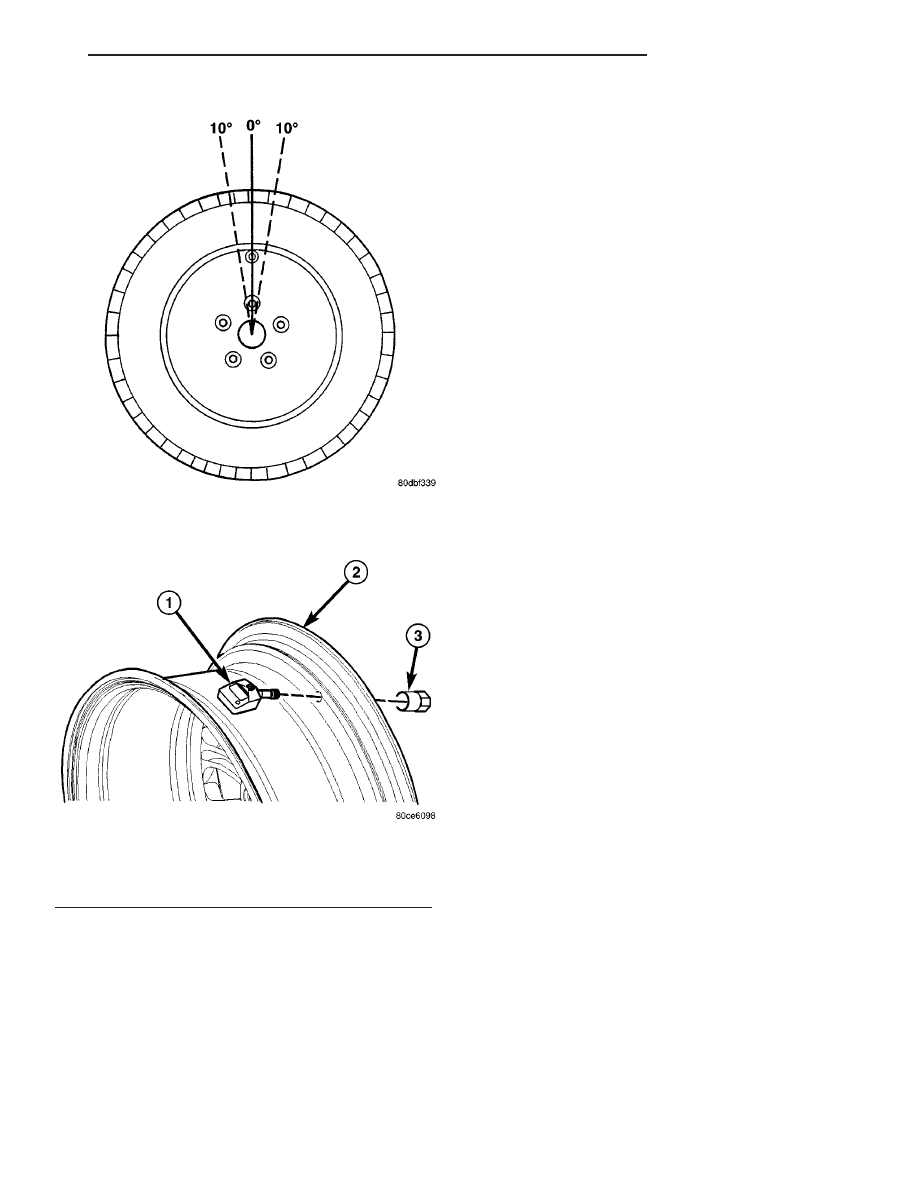Chrysler 300M, Dodge Interpid. Manual - part 340

INSTALLATION
NOTE: Before reinstalling a tire pressure sensor,
replace sealing grommet at base of valve stem.
(1) Wipe area clean where sensor sealing grommet
contacts wheel. Make sure surface of wheel is not
damaged.
(2) Install sensor in wheel as shown (Fig. 19). Do
not attempt to mount sensor otherwise, damage may
occur.
(3) Using a thin wall socket, install special sensor
nut (Fig. 19). Tighten nut to 4 N·m (35 in. lbs.)
torque.
CAUTION: Over-torquing the sensor nut by as little
as 12 N·m (106 in. lbs.) may result in sensor sepa-
ration from the valve stem. Under this condition,
the sensor may still function, however, the condi-
tion should be corrected immediately.
(4) Mount tire on wheel following tire changer
manufacturers instructions, paying special attention
to the following to avoid damaging tire pressure sen-
sor:
(a) Rotating Wheel Tire Changers- Once the
wheel is mounted to the changer, position the sen-
sor valve stem approximately 210° from the head
of the changer in a clockwise direction before rotat-
ing the wheel (also in a clockwise direction) to
mount the tire (Fig. 20). Use this procedure on
both the upper and lower tire beads.
(b) Rotating Tool Tire Changers - Position the
wheel on the changer so that the sensor valve stem
is located approximately 210° clockwise from the
installation end of the mounting/dismounting tool
once the tool is mounted for tire installation (Fig.
21). Make sure the sensor is clear of the lower
bead breaker area to avoid damaging the sensor
when the breaker rises (Fig. 21). Rotate the tool in
a counterclockwise direction to mount the tire. Use
this procedure on both the upper and lower tire
beads.
(5) Install wheel and tire assembly on vehicle.
(Refer to 22 - TIRES/WHEELS - INSTALLATION)
(6) Retrain tire pressure sensors. (Refer to 22 -
TIRES/WHEELS/TIRE PRESSURE MONITORING/
SENSOR - STANDARD PROCEDURE)
Fig. 18 Start Mount/Dismount Tool Within 10
Degrees Of Valve Stem
Fig. 19 Sensor Mounting To Wheel
1 - TIRE PRESSURE SENSOR
2 - WHEEL
3 - NUT
LH
TIRES/WHEELS
22 - 13
SENSOR - TPM (Continued)